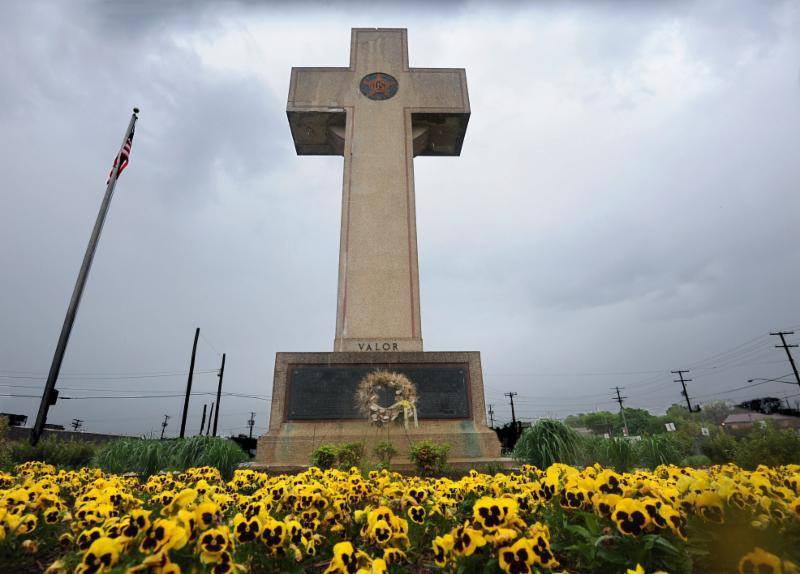[ad_1]
By Micha Green, AFRO Washington, D.C. Editor, [email protected]
For almost a century, Peace Cross has stood in the District of Columbia suburbs, as a symbol to recognize the fallen soldiers during World War I, yet now the Supreme Court of the United States (SCOTUS) must decide whether the emblem is simply a monument or a challenge to the Constitutional mandate of separation of church and state.
The American Humanist Association argues the latter.

The Washington area affiliate of the organization argues Peace Cross, “discriminates against patriotic soldiers who are not Christian, sending a callous message to non-Christians that Christians are worthy of veneration while they may as well be forgotten,” according to The Baltimore Sun.
Located in Maryland’s Bladensburg community, near the intersection of Annapolis and Bladensburg Roads, Peace Cross was built in 1925 to commemorate 49 fallen soldiers from Prince George’s County who died in WWI and for that reason Maryland lawmakers want it to remain.
The state of Maryland filed an amicus brief requesting SCOTUS to hear the case with the endorsement of Gov. Larry Hogan, who said the state was, “determined to fight all the way to the highest court in the land to keep it standing tall and proud.”
However, those against the monument say the 40-foot-tall Peace Cross is a massive endorsement of Christianity. Additionally the American Humanist Association noted that near the site are more monuments significantly smaller in size.
Judges in Virginia’s federal appeals court initially ruled against Peace Cross, saying it “has the primary effect of endorsing religion and excessively entangles the government in religion.”
Yet those who support Peace Cross argue that the shape is simply a secular acknowledgment of those who lost their lives in WWI, not used to depict a religious message. Other backers said the shape of the cross has little do with religion, but emulates the grave markers used overseas for fallen American soldiers.
Starting their fight against the symbol in 2014, the local American Humanist Association affiliate insisted their issue was solely with the Bladensburg monument, and did not want the case to go to SCOTUS.
Now that the Peace Cross issue has reached SCOTUS, which on Nov. 2 agreed to move forward with the case, the 93-year-old monument might serve as a deciding factor for memorials around the country. The case is Maryland-National Capital Park and Planning Commission v. American Humanist Association.
Supporters of the cross note that SCOTUS has previously clarified in the case of similar memorials that monuments, particularly longstanding ones, utilize religious iconography to relay a secular message- thus not violating the Constitution.
[ad_2]
Source link


